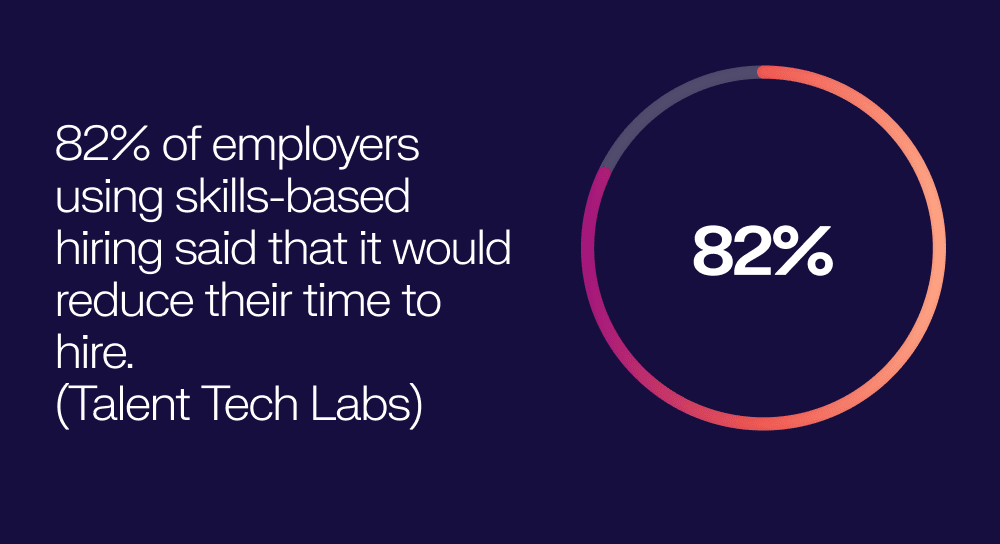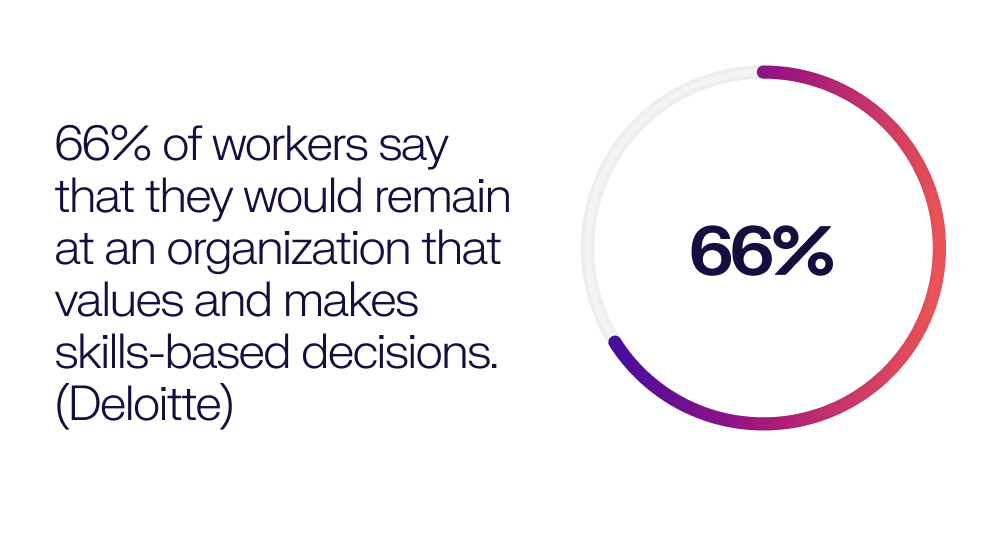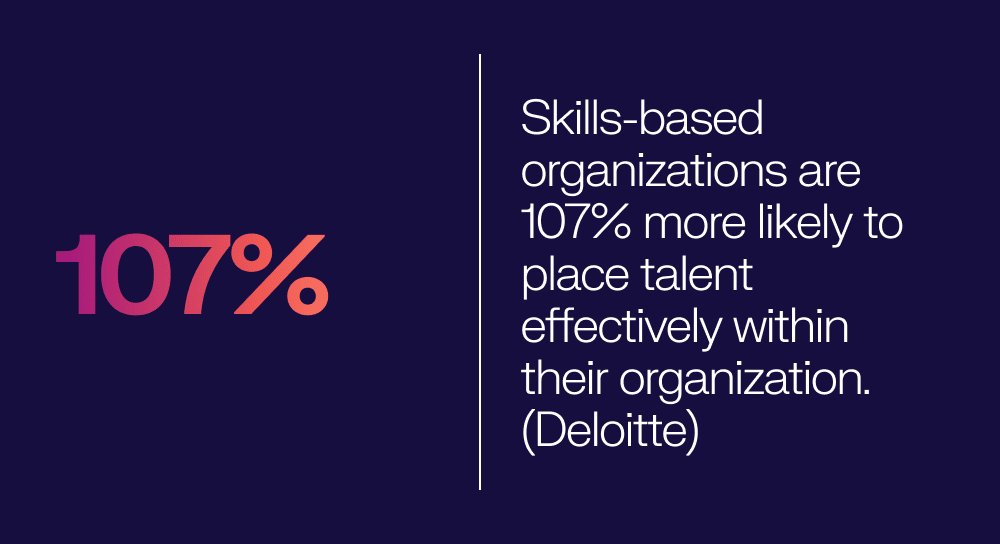Why Skills-based Hiring Will Unlock Business Growth
There’s a growing recognition in the talent management and recruitment industry that “skills first” is the more efficient and equitable model for assessing and hiring staff – broadening the talent pool, and helping to close ever-growing skills gaps, by focusing on people’s capabilities and potential over formal qualifications.
But it’s not just HR teams that should be excited by the prospect of a skills-first model.
Skills-based hiring has the potential to unlock significant business growth, by helping you align talent strategies more closely with organizational goals.
Finding efficiencies – and agility 🤸🏾

In a rapidly changing business environment, agility and adaptability are essential for survival and growth. Skills-first hiring means being able to identify and onboard talent with the skills needed to address emerging challenges and seize new opportunities – quickly.
A skills-based approach requires a deep, dynamic understanding of skills supply and demand. When you have a handle on your talent and jobs data, you create a more agile system for allocating people to roles.
Whether it’s entering new markets, adopting new technologies, or responding to shifting consumer preferences, businesses can pivot more effectively with a workforce equipped with the right skills.
As discussed in our webinar with Talent Tech Labs, being able to identify people’s adjacent skills – something Beamery’s AI can do – also hugely widens your talent pool. Technology can see what humans cannot: the skills someone is likely to have, based on their already stated skills; the skills not listed on someone’s resume, inferred from past experiences.
Organizations hiring in large quantities will likely find that, if they can quantify adjacent skills, they will build far more flexible talent strategies.
Mitigate talent risk ⚠️
Today, organizations not only grapple with retention and hiring challenges, but also with uncertainties on whether they can train or recruit the necessary talent for future needs. Technological innovation, for example, means that many of the skills needed tomorrow barely exist in the workforce today.
By aligning talent acquisition with business strategy, skills-based hiring lets organizations mitigate those risks – hiring for potential (then upskilling or reskilling employees), to meet evolving business demands effectively.
Zoning in on particular areas of the business – perhaps technical roles – where you can hire for potential, is a good way to mitigate talent risk.

Skills-based hiring also helps with retention – so you avoid talent leakage. Employees genuinely feel aligned to an organization when they feel that they are recognized for the skills that they’re bringing and not just the schools they’ve attended or the specific companies they might have on their resume.
Skills-first hiring fosters a culture of continuous learning and development, where employees are encouraged to enhance their skills and pursue career advancement opportunities. This leads to higher levels of employee satisfaction, lower turnover rates, and a more stable workforce… which is crucial for sustaining business growth over time.
Build stronger teams 💪

Matching candidates to roles based on their skills leads to better job fit and performance. And even better: employees who are well-suited to their roles are more engaged, productive, and motivated. They require less time and resources for training and onboarding, meaning you are achieve business goals, and doing so more efficiently.
Moreover, by focusing on skills rather than traditional qualifications, skills-first hiring opens the door to a more diverse talent pool. This diversity brings a range of perspectives, experiences, and ideas to the table, fostering innovation and creativity within your organization.
With a diverse workforce, businesses can better understand and cater to the needs of a broad customer base, leading to increased market reach and growth opportunities.
The benefits of a skills-first approach clearly extend beyond the TA function – and with skills-based resource planning, workforce planning, and internal mobility, you can use your skills intelligence to gain an even greater competitive advantage.